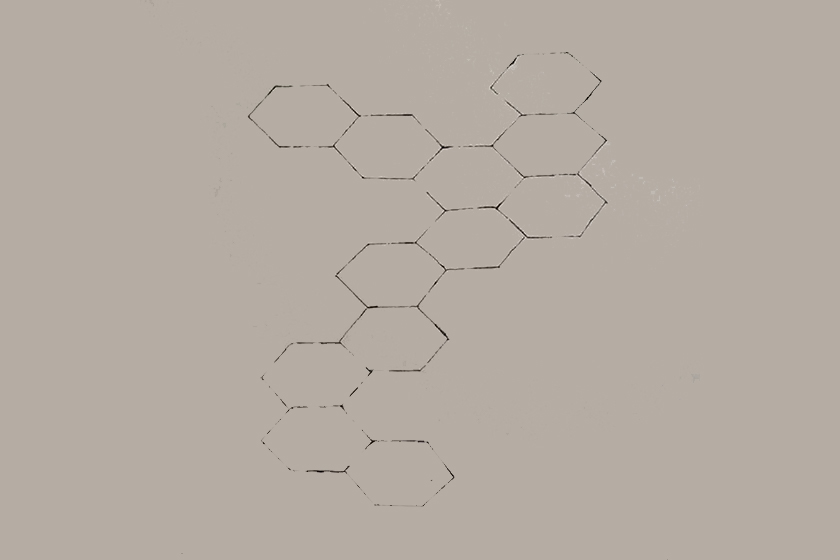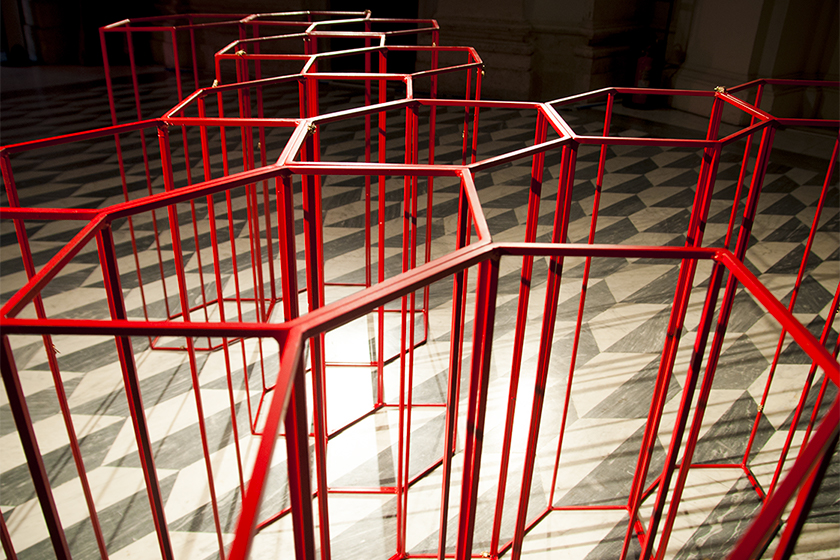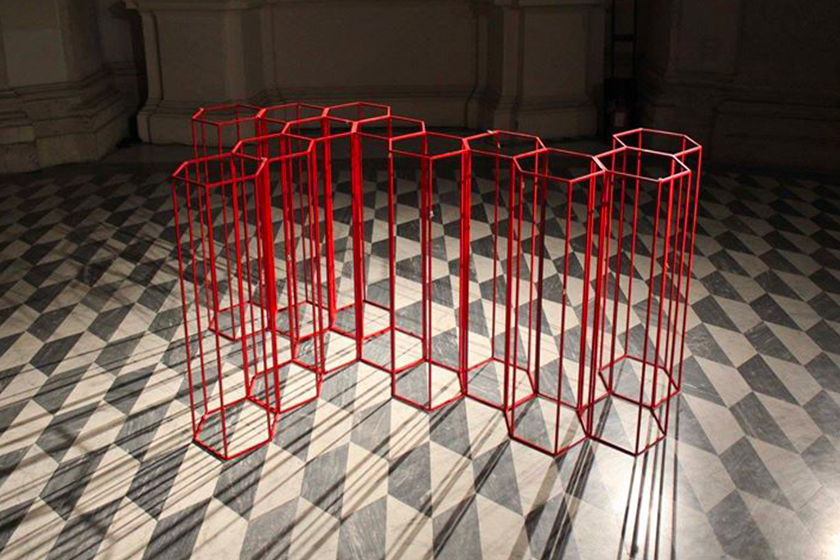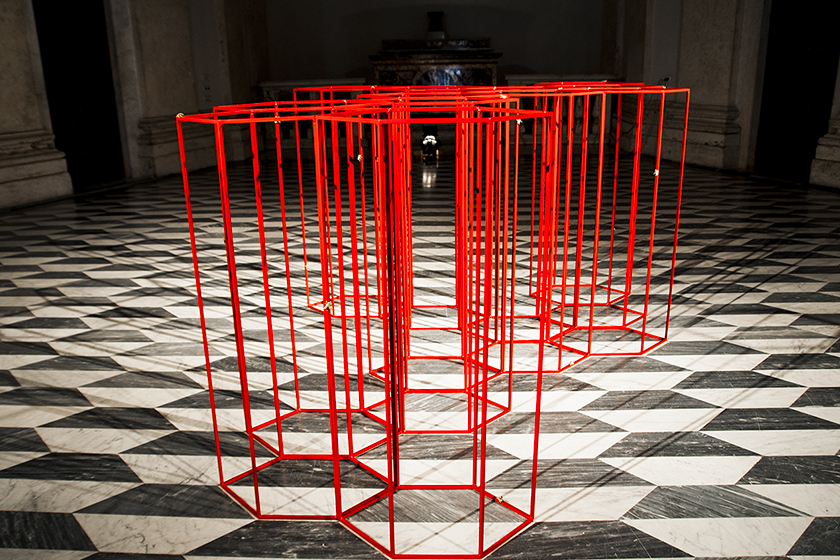May 11 - 21, 2016
Se non vedete Segni o Prodigi non credete affatto - If you don't see signs or wonders, you don't belive at all
Cured by Daniela Cotimbo
Site-specific project for the Sala Santa Rita
With her site-specific project for the Sala Santa Rita in Rome, Se non vedete segni o prodigi, non credete affatto, Anahi Mariotti starts from the architectural and historical analysis of the deconsecrated church of Santa Rita and then turns to a broader reflection on the concept of miracle in contemporary times, a phenomenon that eludes scientific refutation by being handed down over time according to the codes of the dominant culture.
The work thus stems from the study of architectural space as a container of beliefs, a vehicle for rituals and narratives, and in particular from the floor of the Hall, a hexagonal marble checkerboard designed to resemble a beehive, an element that alludes to the symbolic attributes of Saint Rita.
In each place, the relationship with the people inhabiting the space is sought. The artist gets immersed in an environment and takes in all its vibrations by recording what happens inside the body through the heartbeat.
From the floor rises the slender metal structure with articulated weaves that invade the space and allow themselves to be crossed by it, the work is a subtle play of interconnections whose possible evolution consists precisely in the reciprocity of its elements.
To break up the schematic nature of the latticework Anahi places imperceptible and very precious bronze bees between the meshes of the structure, an attempt to bring back to presence what is normally consigned to absence.
It has been written about this work: The Bee and the Rose. For an effective installation in Rome by Lori Adragna.
Iron structure, bronze microsculptures, rose; variable dimensions.






